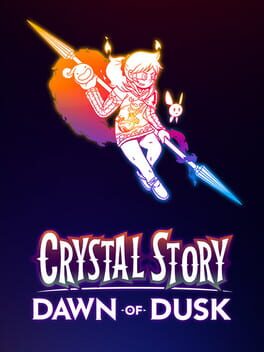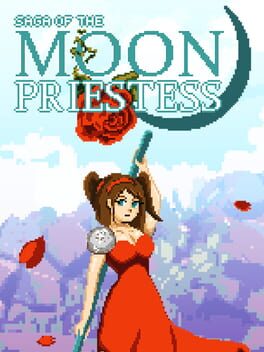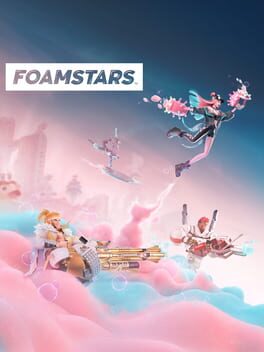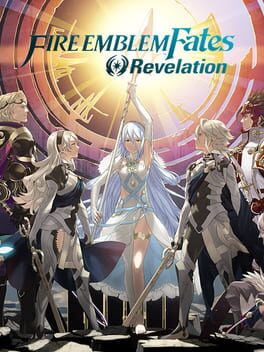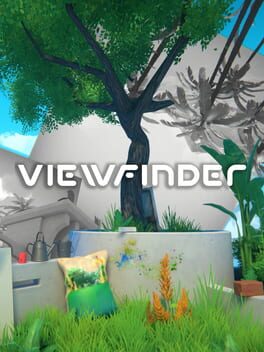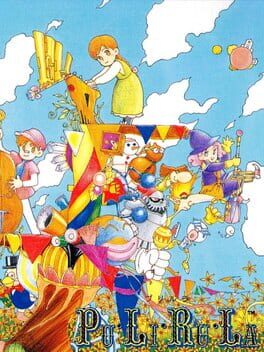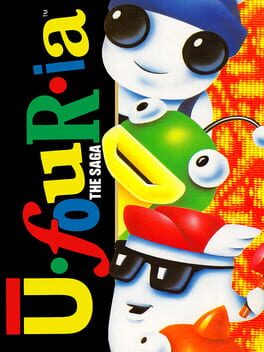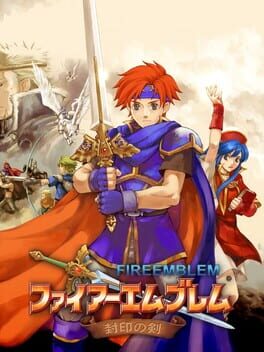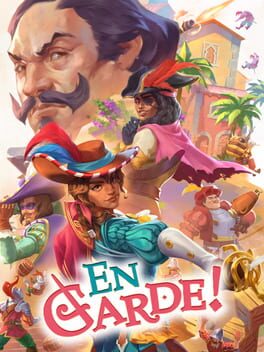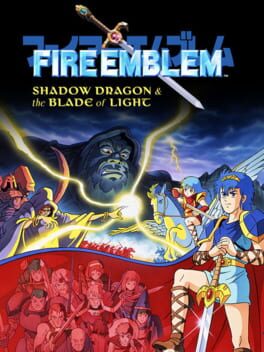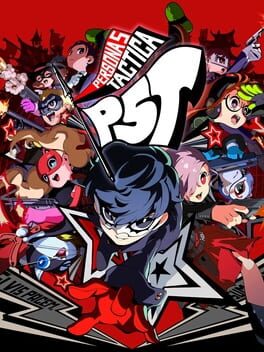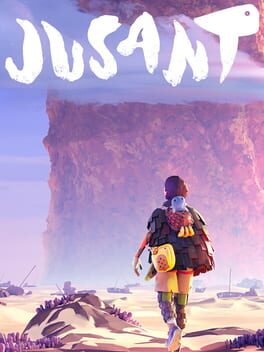tradegood
When you see an art style like this, it immediately feels like there's so much potential to the game. This game clearly seems inspired by Mother/Undertale/Zelda with a dash of Celeste. It looks great and has a cool vibe… but gosh, these games need to cool it on not giving you a real enemy encounter for an hour+ into playing it. The game promises turn-based rpg battles but it appears to only be for boss battles and the two that you experience in the first hour are both scripted for you to lose/not do anything effective. It gave a very bad first impression. Once I got to a real boss battle, lo and behold they aren't turn based battles at all, they're Undertaleish battles where the screen gets very small and you have to dodge enemies like you do in the overworld for 5 seconds. It's not really turn based, though it has you 'miss' attacks a lot making these battles last a long time. It also has you repeating the same overworld puzzles the only difference is that it shrinks everything down to a postage-stamp sized square. If you're steam linking onto your phone like I was, it's not really playable at that screen size. I had to switch devices to finish the game which is not the best user experience.
There are zeldish battles and puzzles in the overworld which are not bad but you are funneled into them quite linearly and you have to finish their very specific tasks to progress, which kinda that messes a bit with the game’s pacing if you miss something minor. The puzzles aren't bad, but it doesn't really go beyond anything too basic. Still not the worst part of the game.
I’ve been in the mood for what this game promises, but it’s running into the same the pitfalls that something like Eastward or Sea of Stars ran into. It’s not bad, but it feels very incomplete and more like an imitation than a game trying to do its own thing. Learning that it’s basically early access without saying it’s early access and it’s “part 1 of an episodic series” has me a little extra cynical about it. This game feels like it needs to find its own voice and focus more on making a system that works internally rather than just being a pastiche of things it likes from other games.
There are zeldish battles and puzzles in the overworld which are not bad but you are funneled into them quite linearly and you have to finish their very specific tasks to progress, which kinda that messes a bit with the game’s pacing if you miss something minor. The puzzles aren't bad, but it doesn't really go beyond anything too basic. Still not the worst part of the game.
I’ve been in the mood for what this game promises, but it’s running into the same the pitfalls that something like Eastward or Sea of Stars ran into. It’s not bad, but it feels very incomplete and more like an imitation than a game trying to do its own thing. Learning that it’s basically early access without saying it’s early access and it’s “part 1 of an episodic series” has me a little extra cynical about it. This game feels like it needs to find its own voice and focus more on making a system that works internally rather than just being a pastiche of things it likes from other games.
2022
I think I prefer the raw gameplay of FOAMSTARS to Splatoon 3. Splatoon 3 is definitely the more mechanically deep, technical, fast-moving, and respects your wallet and time more... but it lacks the je ne sais quoi of FOAMSTARS.
I used to be great at Splatoon 2, consistently being the best member of my team and usually taking my crew to a victory. In FOAMSTARS I am in the running for greatest of all time. But in Splatoon 3, something is off. I think the game pace is too fast. It feels like you’re meant to live and die so quickly and the special gauges fill up very fast so you have to keep an eye on it and spam it as much as possible, which isn’t how I enjoy playing. The weapons also don’t shoot as far as they appear to, making the "game feel" seem off. There are a ton of new weapons and powerups that I can't immediately comprehend and I don't really feel like studying them either. It could also be that the game is almost 2 years old and most people still playing have 500 hours in the game at this point. I find the skill curve to be a bit unreasonable, especially when the beginner weapons are very underwhelming.
Then there's the small, microscopic chance I'm just getting old and out of practice having not played Splatoon 2 in about 4-5 years at this point.
But I must be doing something right since Nintendo keeps awarding me the #1 Super Jump Spot.
I used to be great at Splatoon 2, consistently being the best member of my team and usually taking my crew to a victory. In FOAMSTARS I am in the running for greatest of all time. But in Splatoon 3, something is off. I think the game pace is too fast. It feels like you’re meant to live and die so quickly and the special gauges fill up very fast so you have to keep an eye on it and spam it as much as possible, which isn’t how I enjoy playing. The weapons also don’t shoot as far as they appear to, making the "game feel" seem off. There are a ton of new weapons and powerups that I can't immediately comprehend and I don't really feel like studying them either. It could also be that the game is almost 2 years old and most people still playing have 500 hours in the game at this point. I find the skill curve to be a bit unreasonable, especially when the beginner weapons are very underwhelming.
Then there's the small, microscopic chance I'm just getting old and out of practice having not played Splatoon 2 in about 4-5 years at this point.
But I must be doing something right since Nintendo keeps awarding me the #1 Super Jump Spot.
I came across this and liked the art style, and thought it might be fun to pop into a modern 3-hour retro styled Zelda game that evokes the gameplay of Link's Awakening or Oracle of Seasons. On the one hand this game succeeds tremendously in being an imitation, but it's about as flavorful and substantial as a water cracker.
There's not much here to speak of, no story to sink your teeth into, dungeons and puzzles are very straightforward and lack much of a challenge, and while the gameplay is as smooth gameplay as would expect from something like this, it feels like a carbon copy of any other game in the genre. Overall the world layout is well designed (aside from one spot where I got stuck and had to restart the game). It's just very unambitious, and I think that's a bigger sin then if the game didn't play as smoothly. The high point of this game is the spritework and atmosphere, at times it hints at having a personality, but ultimately this game does nothing to distinguish itself. I'm sure it is a satisfactory miniature Zeldalike experience for many people but I hope the developers challenge themselves to do something more with their next game.
There's not much here to speak of, no story to sink your teeth into, dungeons and puzzles are very straightforward and lack much of a challenge, and while the gameplay is as smooth gameplay as would expect from something like this, it feels like a carbon copy of any other game in the genre. Overall the world layout is well designed (aside from one spot where I got stuck and had to restart the game). It's just very unambitious, and I think that's a bigger sin then if the game didn't play as smoothly. The high point of this game is the spritework and atmosphere, at times it hints at having a personality, but ultimately this game does nothing to distinguish itself. I'm sure it is a satisfactory miniature Zeldalike experience for many people but I hope the developers challenge themselves to do something more with their next game.
2024
Now that I've 100%'ed FOAMSTARS, I have a new perspective. Splatoon and Foamstars have 98% of the same ingredients, but FOAMSTARS’s sulfates and parabens leave you with a less volumetric, healthy looking shine.
FOAMSTARS is the first game I’ve played which is designed entirely around selling people a “season pass” and it’s very informative about how these games work and why gamers are so angry at them all the time.
The honeymoon period was great, largely because it’s a decent game that’s ""“Free”"". What was a pick-up-and-play game with the promise of something new after every milestone has gotten less exciting now that it takes approximately as long to find a match as it takes to play the game. When you’re waiting almost 6 minutes to play a game that has a 6 minute timer but usually lasts 3-4 minutes, I don’t think it will be around long. Considering the game came out less than 2 weeks ago, I wouldn’t expect to be playing it in 2025.
At this stage the game is all about player engagement. They do this by dangling a list of 40 unlockable items that are changed out every 5 weeks. The first 15 levels were easy and fast to get, But slowly and surely, the grind got longer to the point where you probably need to play for 15-20 hours to unlock everything in a given “season pass”. This is a pretty unreasonable thing to ask of a normal person. So I think they give you the best items at the beginning (new character if you pay) and the middle (around where exp grinding gets annoying), and something at the end (new character if you don’t pay) that it makes you feel like you’re missing out on something of value if you don’t organize your life around the game. For players who do pay for a $6 season pass, their reward for the grinding is in the form of a skin which retails at an absurd $45 USD. It's all artificial value, they could have just sold that skin and everything in the season pass for $6 and it wouldn't seem like a "deal". People are buying and unlocking these things, even though everyone looks the same when they’re covered in foam.
For those of us who don’t want to fork out $6 a month to play the same game we’re alerady playing for free, you miss out on “content”, mostly in the form of emotes and junk skins like new colors of your surf board or your weapon or a neon light that appears on your back. These are even more trivial than the character skins, but I don’t think people actually care what these rewards are or do, it’s more that they are unlocking something for a hard day’s work in the foam mines. It’s like a transactional relationship between the player and the game.
Meanwhile I paid $40 USD for Splatoon 3 and can safely say unlocking stuff in that game isn’t the focus. The actual gameplay is why you’re there, and the cosmetics are just nice to have and largely forgettable. I am sort of ‘working toward’ getting better dualies but it’s so that I can play the game better, not just so that my character does a unique fortnite dance in the select screen. There’s also much more thought put into its single player and alternative game modes. Having the peace of mind that I’ll be able to put down Splatoon for a month, a year, three years and still have a complete experience is far preferable to the idea that if I don’t play the game for 20 hours this month I won’t unlock Mel T. as a playable character.
I never played or had interest in a live service game before and suspected it was bad, but the reward incentives seem like a very an unhealthy way to spend one’s time. I think I will wash my hands of Foamstars…. without soap.
FOAMSTARS is the first game I’ve played which is designed entirely around selling people a “season pass” and it’s very informative about how these games work and why gamers are so angry at them all the time.
The honeymoon period was great, largely because it’s a decent game that’s ""“Free”"". What was a pick-up-and-play game with the promise of something new after every milestone has gotten less exciting now that it takes approximately as long to find a match as it takes to play the game. When you’re waiting almost 6 minutes to play a game that has a 6 minute timer but usually lasts 3-4 minutes, I don’t think it will be around long. Considering the game came out less than 2 weeks ago, I wouldn’t expect to be playing it in 2025.
At this stage the game is all about player engagement. They do this by dangling a list of 40 unlockable items that are changed out every 5 weeks. The first 15 levels were easy and fast to get, But slowly and surely, the grind got longer to the point where you probably need to play for 15-20 hours to unlock everything in a given “season pass”. This is a pretty unreasonable thing to ask of a normal person. So I think they give you the best items at the beginning (new character if you pay) and the middle (around where exp grinding gets annoying), and something at the end (new character if you don’t pay) that it makes you feel like you’re missing out on something of value if you don’t organize your life around the game. For players who do pay for a $6 season pass, their reward for the grinding is in the form of a skin which retails at an absurd $45 USD. It's all artificial value, they could have just sold that skin and everything in the season pass for $6 and it wouldn't seem like a "deal". People are buying and unlocking these things, even though everyone looks the same when they’re covered in foam.
For those of us who don’t want to fork out $6 a month to play the same game we’re alerady playing for free, you miss out on “content”, mostly in the form of emotes and junk skins like new colors of your surf board or your weapon or a neon light that appears on your back. These are even more trivial than the character skins, but I don’t think people actually care what these rewards are or do, it’s more that they are unlocking something for a hard day’s work in the foam mines. It’s like a transactional relationship between the player and the game.
Meanwhile I paid $40 USD for Splatoon 3 and can safely say unlocking stuff in that game isn’t the focus. The actual gameplay is why you’re there, and the cosmetics are just nice to have and largely forgettable. I am sort of ‘working toward’ getting better dualies but it’s so that I can play the game better, not just so that my character does a unique fortnite dance in the select screen. There’s also much more thought put into its single player and alternative game modes. Having the peace of mind that I’ll be able to put down Splatoon for a month, a year, three years and still have a complete experience is far preferable to the idea that if I don’t play the game for 20 hours this month I won’t unlock Mel T. as a playable character.
I never played or had interest in a live service game before and suspected it was bad, but the reward incentives seem like a very an unhealthy way to spend one’s time. I think I will wash my hands of Foamstars…. without soap.
2024
This is what corporate art looks like. It's so approachable by design that it feels hollow. The theming is bizarre, the cheerful bubblegum pop aesthetics feel uncanny, and stuff like "FriYAY" and "replacing kills with chills" feels like it was workshopped by all the most out of touch colleagues in your office trying to make something safe for the Fortnite generation. There's also a strange confluence of different art styles from the crisp 3D to the flat fiverr-style animated segments, to the literal photographs of wildlife that is incorporated as portraits and album art.
The whole experience feels blatently KPI driven. Any pretense that you're playing something that wasn't cooked up by corporate suits is stripped away when you see the $45 fee for a skin. In a way it's a unique artistic vision, in that, it feels so heavily designed as a set of deliverables by project managers and made for business users.
As a result, it's not quite the next evolution of Splatoon that it wants to be. The single player game modes are where the game hooked me but it's very short and leaves a bit to be desired. Not sure how balanced the PvP is. It's very chaotic, and there are some odd design choices such as a game mode reliant on your team's star player to stay alive and there's a game over condition when they die. Overall, It's a servicable game and the fun is there, but it's not as interesting as it could be. The game feels like it's targeting such a wide audience that it's meaningless.
The whole experience feels blatently KPI driven. Any pretense that you're playing something that wasn't cooked up by corporate suits is stripped away when you see the $45 fee for a skin. In a way it's a unique artistic vision, in that, it feels so heavily designed as a set of deliverables by project managers and made for business users.
As a result, it's not quite the next evolution of Splatoon that it wants to be. The single player game modes are where the game hooked me but it's very short and leaves a bit to be desired. Not sure how balanced the PvP is. It's very chaotic, and there are some odd design choices such as a game mode reliant on your team's star player to stay alive and there's a game over condition when they die. Overall, It's a servicable game and the fun is there, but it's not as interesting as it could be. The game feels like it's targeting such a wide audience that it's meaningless.
Every series has to have a worst game, right? Revelation isn't bad -- it actually made me appreciate aspects to the Fates core gameplay even more than I already did. But Revelation takes a formula that worked in Conquest and slows it to .5 speed.
The dragon veins are a hinderance in this game more than they're interesting. In Birthright, Dragon Veins were understated, it didn't feel like the focus of many maps. In Conquest, they were used to make maps more interesting and dynamic. In this game, it just slows down your progress and makes the maps feel like a slog. Even when there's a cool idea behind a map, like the maze with the cracks in the ground, burning down forests to stop reinforcements, digging through snow to find enemies or treasure... these maps are greatly held back by the game's insistence to make you go out of your way and slow down your progress. If you were to play this game shortly after Birthright or Conquest, it would feel even more potent.
While Birthright's maps felt a bit uninspired, these maps just felt repetitive which is probably worse. It seemed like every other map was a moving platform/elevator type of map or it was a map with a big obstacle in the middle that you use dragon veins to slowly clear. Even some of the great maps from other routes (such as Chapter 14) feel very non-dynamic in this version.
The game also throws way too many characters at you. It feels like heresy to say because I like the idea of making a team from whoever I want, but in practice, you just end up with the entire cast at dramatically different levels to the point where so many will never be useful without grinding and once someone goes on the bench, you'll never see them again. I went out of my way to get some supports I've never gotten before or not had possible, and the sheer number of options had me forget sometimes who I was trying to pair up.
I did have fun though, mostly by my own design. I avoided royals and used a lot of characters I wouldn't normally use, or I did some funny classes. Having Setsuna as a dread fighter, Felicia as a Hero, and Niles as a ballastician was funny and I think it added something to this experience. But it also shows how much the DLC and favoritism can impact the game on Hard mode. I also shipped fem Corrin with Rhajat which added some nice flavor I probably wouldn't have otherwise gotten.
I didn't even bother with the story this time around so maybe it's good... I will never know.
The dragon veins are a hinderance in this game more than they're interesting. In Birthright, Dragon Veins were understated, it didn't feel like the focus of many maps. In Conquest, they were used to make maps more interesting and dynamic. In this game, it just slows down your progress and makes the maps feel like a slog. Even when there's a cool idea behind a map, like the maze with the cracks in the ground, burning down forests to stop reinforcements, digging through snow to find enemies or treasure... these maps are greatly held back by the game's insistence to make you go out of your way and slow down your progress. If you were to play this game shortly after Birthright or Conquest, it would feel even more potent.
While Birthright's maps felt a bit uninspired, these maps just felt repetitive which is probably worse. It seemed like every other map was a moving platform/elevator type of map or it was a map with a big obstacle in the middle that you use dragon veins to slowly clear. Even some of the great maps from other routes (such as Chapter 14) feel very non-dynamic in this version.
The game also throws way too many characters at you. It feels like heresy to say because I like the idea of making a team from whoever I want, but in practice, you just end up with the entire cast at dramatically different levels to the point where so many will never be useful without grinding and once someone goes on the bench, you'll never see them again. I went out of my way to get some supports I've never gotten before or not had possible, and the sheer number of options had me forget sometimes who I was trying to pair up.
I did have fun though, mostly by my own design. I avoided royals and used a lot of characters I wouldn't normally use, or I did some funny classes. Having Setsuna as a dread fighter, Felicia as a Hero, and Niles as a ballastician was funny and I think it added something to this experience. But it also shows how much the DLC and favoritism can impact the game on Hard mode. I also shipped fem Corrin with Rhajat which added some nice flavor I probably wouldn't have otherwise gotten.
I didn't even bother with the story this time around so maybe it's good... I will never know.
This review contains spoilers
Review of the Noritsune Tragic ending:
This game was a heartbreaker for me, but not in the way the writers intended. I immediately connected with this game, I love the presentation and Buddhism motifs and political intrigue of the common route. I was happy to go down the road with my hotheaded rival Noritsune, but I think the story got away from them. It's at once very basic, but also possibly casts too wide of a character development. I think his motivations swung to extremes in a way they didn't have to. It's all played up for drama every chapter but the route as a whole struggles.
I love the MC because she's very proactive in her role and her inner conflict doesn't manifest itself in her being weak, but instead there's strength behind her compassion. But she makes some pretty big leaps of logic to defend her actions. I think she never really wrestles with the fact that she did betray a ton of people and is responsible for a lot of senseless killing herself! It's very much like Corrin from Fire Emblem's unintentional cognitive dissonance... trying to make a pacifist character who willingly goes into violent situations, commits pointless killings, and then justifies it with her ethics just doesn't work.
As the twists went on and got a little more contrived, I had faith that the writers would find some way to write themselves out of it, but instead there is the 'Tragic Ending' which ... is logical and realistic I suppose, but it's not very satisfying. It really just points out how the route was doomed from the beginning despite many reasonable opportunities for it not to be. Ultimately even though there was love there, the characters are the ones who held themselves back. The wrinkle that they didn't realize they loved each other until the end helps, but even after that discovery they continue to act the same way. I'm not just saying this because I wanted a good ending, but because it sort of trivializes the entire route to an extent.
This game was a heartbreaker for me, but not in the way the writers intended. I immediately connected with this game, I love the presentation and Buddhism motifs and political intrigue of the common route. I was happy to go down the road with my hotheaded rival Noritsune, but I think the story got away from them. It's at once very basic, but also possibly casts too wide of a character development. I think his motivations swung to extremes in a way they didn't have to. It's all played up for drama every chapter but the route as a whole struggles.
I love the MC because she's very proactive in her role and her inner conflict doesn't manifest itself in her being weak, but instead there's strength behind her compassion. But she makes some pretty big leaps of logic to defend her actions. I think she never really wrestles with the fact that she did betray a ton of people and is responsible for a lot of senseless killing herself! It's very much like Corrin from Fire Emblem's unintentional cognitive dissonance... trying to make a pacifist character who willingly goes into violent situations, commits pointless killings, and then justifies it with her ethics just doesn't work.
As the twists went on and got a little more contrived, I had faith that the writers would find some way to write themselves out of it, but instead there is the 'Tragic Ending' which ... is logical and realistic I suppose, but it's not very satisfying. It really just points out how the route was doomed from the beginning despite many reasonable opportunities for it not to be. Ultimately even though there was love there, the characters are the ones who held themselves back. The wrinkle that they didn't realize they loved each other until the end helps, but even after that discovery they continue to act the same way. I'm not just saying this because I wanted a good ending, but because it sort of trivializes the entire route to an extent.
2023
Viewfinder is like if The Witness was made by artists. Rather than spotlighting the puzzles and challenge, it is focused on the design and makes for a very cohesive non-euclidean puzzle game that explores lots of ideas to their logical ends. The game has a simple conceit - to place geometry from photographs into the game environment, but has enough tricks up its sleeve to be a consistently entertaining experience.
There are some real flashes of brilliance here - but rather than repeating them over and over, the developers were extremely restrained and constantly pulled the focus back to the core idea for better or worse. For example one of the first puzzles you complete incorporates various different art styles, pencil drawing, watercolor, blocky children's drawings, and pixel art and it feels very clever as you move through them. Unfortunately, that is the only time we really see that type of art stylistic change (outside of a few notable examples). This felt like something that could have been the core to an entire world if not the entire game, but the idea was dropped. There are many cases where individual puzzles shine but they're given equal treatment as relatively standard ones. This game was very focused on having a polished and memorable first impression, and I did notice as the game went on some of the timed puzzles or teleportation puzzles at the end of the game didn't quite work as well as some of the other standard platforming ones, but overall I enjoyed at least something about every section of the game.
It's not too difficult to solve any of the puzzles, and the nature of the game's mechanics forced them to make relatively small zones. This helps to give it the "just one more puzzle" feeling, but I think it does diminish the sense of discovery slightly that it stuck to a lot of repeating formulas.
While the introduction to the narrative portion of the game was fantastic, I found it didn't have much to say or much to go with it. It might also be that this genre is known to have sparse narratives or totally memorable ones that enhance its twisty-turny mechanics... to have one that is inbetween and largely forgettable is a missed opportunity. I think the environmental storytelling didn't quite build up to what it promised.
There are some real flashes of brilliance here - but rather than repeating them over and over, the developers were extremely restrained and constantly pulled the focus back to the core idea for better or worse. For example one of the first puzzles you complete incorporates various different art styles, pencil drawing, watercolor, blocky children's drawings, and pixel art and it feels very clever as you move through them. Unfortunately, that is the only time we really see that type of art stylistic change (outside of a few notable examples). This felt like something that could have been the core to an entire world if not the entire game, but the idea was dropped. There are many cases where individual puzzles shine but they're given equal treatment as relatively standard ones. This game was very focused on having a polished and memorable first impression, and I did notice as the game went on some of the timed puzzles or teleportation puzzles at the end of the game didn't quite work as well as some of the other standard platforming ones, but overall I enjoyed at least something about every section of the game.
It's not too difficult to solve any of the puzzles, and the nature of the game's mechanics forced them to make relatively small zones. This helps to give it the "just one more puzzle" feeling, but I think it does diminish the sense of discovery slightly that it stuck to a lot of repeating formulas.
While the introduction to the narrative portion of the game was fantastic, I found it didn't have much to say or much to go with it. It might also be that this genre is known to have sparse narratives or totally memorable ones that enhance its twisty-turny mechanics... to have one that is inbetween and largely forgettable is a missed opportunity. I think the environmental storytelling didn't quite build up to what it promised.
1991
1992
A super charming and tastefully simple metroidvania. It really came out as a fully formed adventure, with wonderful character designs, animations, and presentation. Once you get in the zone, the challenge is pretty easy to read but can be hard to actually do, and before I started playing with save states, some areas tested my patience. While it wore on me in the end, it's an overwhelmingly happy experience that feels way ahead of its time.
I tried playing The Binding Blade a couple times in the past, but never found myself getting too far in it due to the obvious reasons - hit rates too low, ambush reinforcements, strong enemies, a weak early game cast, and poor growths making the game feel like it's going to be a punishing slog. But my enthusiasm for Fire Emblem has never been higher, and I think I played it at the right time to appreciate it.
The real problem is that the game is unpredictable ways which can be frustrating. I reset more than a few times due to inescapably bad odds messing up my plans. For example, Fire Emblem has never really done status effects well, and the AI seemed to use and successfully hit berserk and sleep spells way more often than any other game. Same with bolting and other long-range tomes. I'm glad I played my first full run on an emulator since it's really unfair to a blind playthrough.
Items in this game were a little bit off for me. While I was happy there are plenty of stat boosters which allowed me to keep a couple units I liked viable, I did find myself waiting around too long to get Hero Crest and Knight Crest that I gave up on the secondary projects I was working on. I tried bringing Noah and Fir back for the late game, but it was clear they were outclassed by the promoted units that you get later on. The gap between great and average or above average units is pretty steep in this game.
Overall, while I feel like I could pick up FE7 and FE8 at any time and have it feel fresh in some way, I don't feel any rush to jump into FE6 hard mode any time soon. I can't imagine another playthrough would be dramatically different in the way that other games can be. I might check out Project Ember or a randomized run in the future, but I don't have as much desire to jump back into vanilla FE6.
The real problem is that the game is unpredictable ways which can be frustrating. I reset more than a few times due to inescapably bad odds messing up my plans. For example, Fire Emblem has never really done status effects well, and the AI seemed to use and successfully hit berserk and sleep spells way more often than any other game. Same with bolting and other long-range tomes. I'm glad I played my first full run on an emulator since it's really unfair to a blind playthrough.
Items in this game were a little bit off for me. While I was happy there are plenty of stat boosters which allowed me to keep a couple units I liked viable, I did find myself waiting around too long to get Hero Crest and Knight Crest that I gave up on the secondary projects I was working on. I tried bringing Noah and Fir back for the late game, but it was clear they were outclassed by the promoted units that you get later on. The gap between great and average or above average units is pretty steep in this game.
Overall, while I feel like I could pick up FE7 and FE8 at any time and have it feel fresh in some way, I don't feel any rush to jump into FE6 hard mode any time soon. I can't imagine another playthrough would be dramatically different in the way that other games can be. I might check out Project Ember or a randomized run in the future, but I don't have as much desire to jump back into vanilla FE6.
2023
En Garde is swashbuckling fun, and even though the game doesn't evolve beyond the first impression, it still shows that you don't need to be mechanically complex or focus on variety to make a worthwhile experience. At about 4 hours long, the game hit a sweet spot of offering a substantial experience without getting in its own way (though some of the late-game challenges were a little more demanding than they needed to be).
The pulpy latin adventure flavor and sense of humor, makes this game stand out in a great way, and the sharp presentation made a lot of the game's weaknesses more forgiving. Even if there were only 5-6 enemies repeated, the fun came from dropping chandeliers, throwing buckets on people's heads, tossing a lantern onto a stack of gunpowder, etc. While the corridors didn't do much to distinguish themselves, I did find myself enjoying the platforming and moving through the space. I think the game shines with how it handles crowd control, battling 4-5 enemies at the same time with someone in the back throwing bombs is hectic fun. My biggest gripe is that the boss battles turned into kind of tedious chases once all the destructable elements were used, and the game really requires you to nail the parry mechanics, which is not as fun as laying traps for your enemies. Still this is some of the most fun action swordfighting I've experienced in a game, which forgives a lot of the game's rougher edges.
The pulpy latin adventure flavor and sense of humor, makes this game stand out in a great way, and the sharp presentation made a lot of the game's weaknesses more forgiving. Even if there were only 5-6 enemies repeated, the fun came from dropping chandeliers, throwing buckets on people's heads, tossing a lantern onto a stack of gunpowder, etc. While the corridors didn't do much to distinguish themselves, I did find myself enjoying the platforming and moving through the space. I think the game shines with how it handles crowd control, battling 4-5 enemies at the same time with someone in the back throwing bombs is hectic fun. My biggest gripe is that the boss battles turned into kind of tedious chases once all the destructable elements were used, and the game really requires you to nail the parry mechanics, which is not as fun as laying traps for your enemies. Still this is some of the most fun action swordfighting I've experienced in a game, which forgives a lot of the game's rougher edges.
This was the weirdest release Nintendo has ever done. Why did they go back to localize this game, only to sell it for 4 months? Why did they create a new emulation UI that is legitimately worse than the NES online UI. The ONLY way to save is by using a bookmark. Several times while playing, I accidentally ‘load bookmark’ instead of ‘save bookmark’ and lost literal hours of progress. They also went so far as to let you roll back turn by turn, but only give you one save state. They added a very nice sound test but did not include any instruction manual stuff that is actually necessary to understand what you’re doing.
I've tried to play FE1 a couple times in the past but just kind of got bored and annoyed by having so much critical information only accessible outside of the game (like weapon might or weight) or is just super tedious to do (like counting movement or calculating how much damage you’re going to do or moving items around). But going in not taking it seriously and instead just picking up on the vibes makes it very fun. You can have fun with the game by just getting a general feeling of whether you will double an enemy or withstand an enemy phase. I think trying to play the game too fast can take the fun out of it since a lot of the challenge comes from the way this game handled reinforcements, and I think it's a mistake to try to play this too efficiently.
Not seeing enemy movement or a battle preview got really annoying in some of the late game maps which did get a lot more tedious but aside from Chapter 24 I made a point not to warp-skip anything so I could get the full experience, and I’m glad I did. The reinforcements made me actually try to beat maps quickly, though many of them I have 15-20 turns in just because of the rotten inventory management. I don’t think I even used all my talisman and speed rings because I just didn’t want to deal with convoy management and trading stuff off of characters a certain point. This kind of stuff feels hostile to the player in 2023, but I don’t think it really weighs the game down that much. The core of the game is almost everything you expect from Fire Emblem even if the execution is held back by the technology limitations.
I played pretty loose with my characters. Both Christmas Cavaliers died in the endgame chapters, Wendell valiantly sacrificed himself for the Falchion, and I killed Tiki on the map because I couldn’t recruit her without Bonthu lol. Hardin is amazing in this game and Midia was an MVP. But I think Best girl was Maria, the damsel who is the most thirsty for Marth. Her good ending was just "her enthusiasm for Marth has not diminished".
The game isn’t some hidden masterpiece (but Gaiden is, check that one out). It's worth playing from a historical perspective, and one that every FE fan should beat at least once.
I've tried to play FE1 a couple times in the past but just kind of got bored and annoyed by having so much critical information only accessible outside of the game (like weapon might or weight) or is just super tedious to do (like counting movement or calculating how much damage you’re going to do or moving items around). But going in not taking it seriously and instead just picking up on the vibes makes it very fun. You can have fun with the game by just getting a general feeling of whether you will double an enemy or withstand an enemy phase. I think trying to play the game too fast can take the fun out of it since a lot of the challenge comes from the way this game handled reinforcements, and I think it's a mistake to try to play this too efficiently.
Not seeing enemy movement or a battle preview got really annoying in some of the late game maps which did get a lot more tedious but aside from Chapter 24 I made a point not to warp-skip anything so I could get the full experience, and I’m glad I did. The reinforcements made me actually try to beat maps quickly, though many of them I have 15-20 turns in just because of the rotten inventory management. I don’t think I even used all my talisman and speed rings because I just didn’t want to deal with convoy management and trading stuff off of characters a certain point. This kind of stuff feels hostile to the player in 2023, but I don’t think it really weighs the game down that much. The core of the game is almost everything you expect from Fire Emblem even if the execution is held back by the technology limitations.
I played pretty loose with my characters. Both Christmas Cavaliers died in the endgame chapters, Wendell valiantly sacrificed himself for the Falchion, and I killed Tiki on the map because I couldn’t recruit her without Bonthu lol. Hardin is amazing in this game and Midia was an MVP. But I think Best girl was Maria, the damsel who is the most thirsty for Marth. Her good ending was just "her enthusiasm for Marth has not diminished".
The game isn’t some hidden masterpiece (but Gaiden is, check that one out). It's worth playing from a historical perspective, and one that every FE fan should beat at least once.
2023
I went into P5T with mixed feelings. This is the 4th or 5th spinoff and it's been about 6-7 years since we first met the cast. For a game that was originally about 'taking your time' and letting time and experience change you, every new release aside from Royal has flattened the characters more and more. I wasn't expecting a ton of character development, nor is there any to be found.
As a Persona game there's a requisite amount of storytelling and visual novel elements so even when there's not much to say, half or more of the game takes place in dialogue exchanges. The character interactions hit all the familiar beats and the humor is there, but it never feels fresh. Ryuji and Morgana are at each other's throats, Yusuke is aloof, Haru is naive, etc. All of this feels like it's weighing the game down a bit, and I don't think the new characters or their troubles particularly carry the game. I like Erina and Kasakube well enough but there's not much substance to work with.
As far as gameplay, this game is very easy on Hard, and on Merciless it just seems to add more enemies to the point where it feels tedious instead of like a real challenge. Each character gets a "1 More" every time they knock down an enemy, and additionally you get an overpowered triangle attack, so it feels very easy to exploit these things. The only real challenge comes from beating these little puzzleboxes in as few turns as possible. It never feels like you're in any danger of actually getting killed or a game over. Instead its like the game wants you to eventually win, and come back later to get a better score. I understand some people may like gameplay loop but I think it takes the stakes out of the game.
Even if a character gets KO'd there's a baton pass so that they get replaced by someone with full HP and SP, so it can be advantageous to kill your own character. The game also has a cool spin on elemental attacks, where they work as status effects, so things like Bufu freezes, Garu knocks enemy back, and Psio hypnotizes the enemy... but it doesn't really get more complex than that and adding a few exploding barrels to the maps.
It's a very generous game if it's what you're into, and I can see why some people would love it, but it's just missing the stakes I am looking for from a strategy game.
As a Persona game there's a requisite amount of storytelling and visual novel elements so even when there's not much to say, half or more of the game takes place in dialogue exchanges. The character interactions hit all the familiar beats and the humor is there, but it never feels fresh. Ryuji and Morgana are at each other's throats, Yusuke is aloof, Haru is naive, etc. All of this feels like it's weighing the game down a bit, and I don't think the new characters or their troubles particularly carry the game. I like Erina and Kasakube well enough but there's not much substance to work with.
As far as gameplay, this game is very easy on Hard, and on Merciless it just seems to add more enemies to the point where it feels tedious instead of like a real challenge. Each character gets a "1 More" every time they knock down an enemy, and additionally you get an overpowered triangle attack, so it feels very easy to exploit these things. The only real challenge comes from beating these little puzzleboxes in as few turns as possible. It never feels like you're in any danger of actually getting killed or a game over. Instead its like the game wants you to eventually win, and come back later to get a better score. I understand some people may like gameplay loop but I think it takes the stakes out of the game.
Even if a character gets KO'd there's a baton pass so that they get replaced by someone with full HP and SP, so it can be advantageous to kill your own character. The game also has a cool spin on elemental attacks, where they work as status effects, so things like Bufu freezes, Garu knocks enemy back, and Psio hypnotizes the enemy... but it doesn't really get more complex than that and adding a few exploding barrels to the maps.
It's a very generous game if it's what you're into, and I can see why some people would love it, but it's just missing the stakes I am looking for from a strategy game.
2023
Jusant is an interesting game which made a strong first impression, but as it went on the frustrations stacked and it felt like it wasn't really going anywhere. It's a game all about how you move, and the method of using the left and right triggers to control the character's hands feels unique for how much it is in the forefront of the game. Unfortunately the actual movement felt a little like a prototype still, at times being stiff or unresponsive and not quite up to the platforming that the game asks of the player in the second half of the game. Obviously it took a lot of ambition to make a physics based game like this but it could have used a lot more refinement. A lot of collisions were wrong and a few times I got stuck in the geometry. The button mapping was also slightly annoying with your companion, I never remembered which button did what and would often have to sit through the long 'pet the dog' animation accidentally.
The game's story is also a weak point. I think the environmental storytelling had great potential but the game is weighed down by uninteresting datalogs. It feels inspired by Ico or Journey-style games with imposing environments and an isolated protagonist but it doesn't do anything with that idea. Some of the puzzles are nice but it feels like they could have done more.
The game's story is also a weak point. I think the environmental storytelling had great potential but the game is weighed down by uninteresting datalogs. It feels inspired by Ico or Journey-style games with imposing environments and an isolated protagonist but it doesn't do anything with that idea. Some of the puzzles are nice but it feels like they could have done more.
